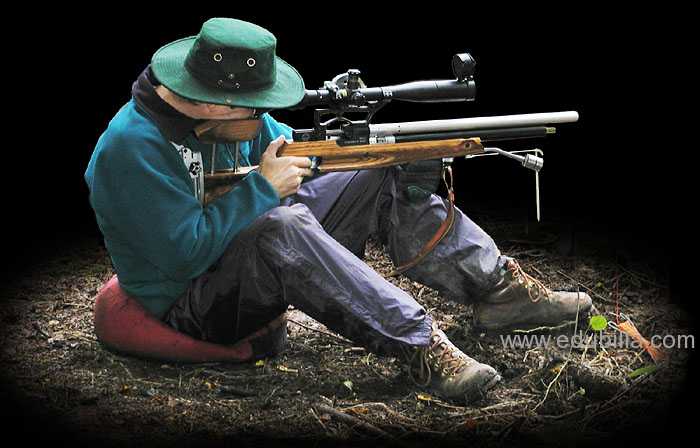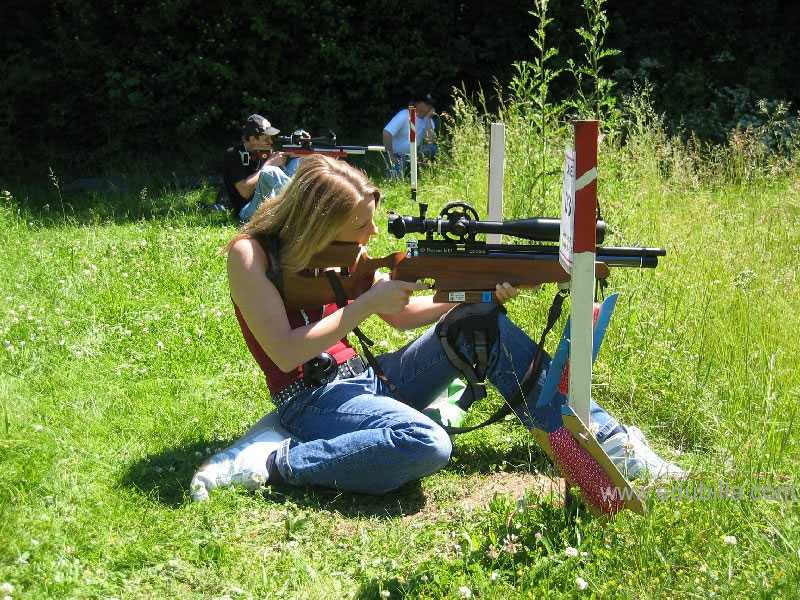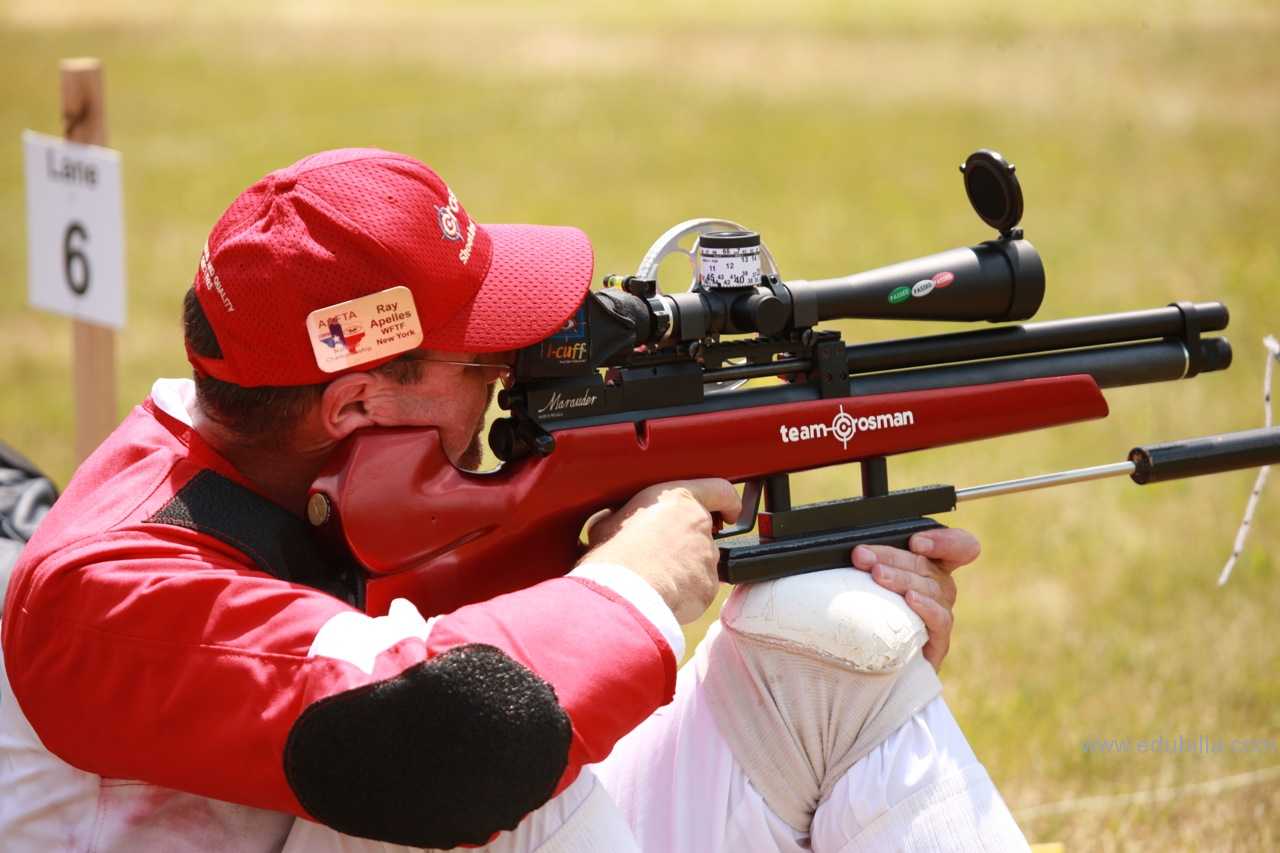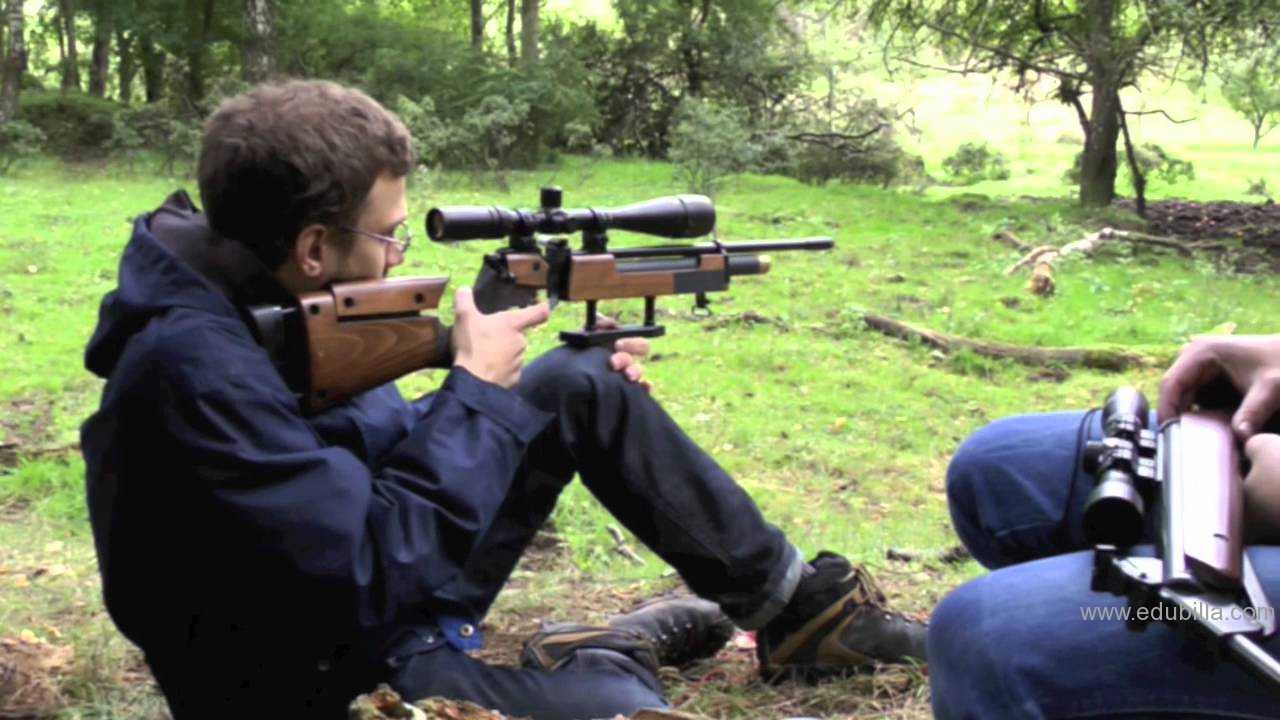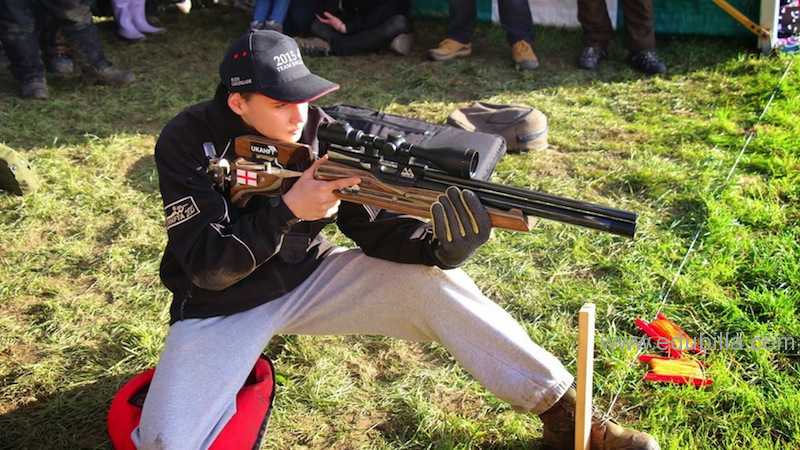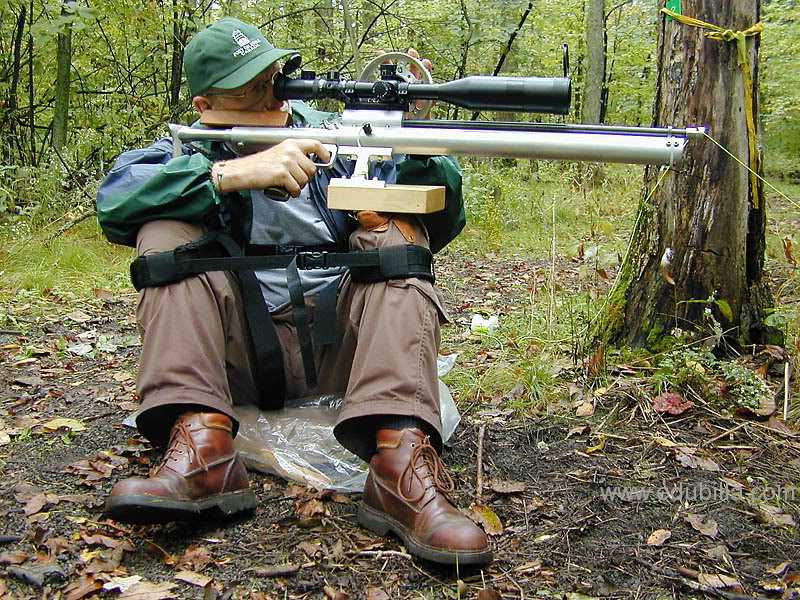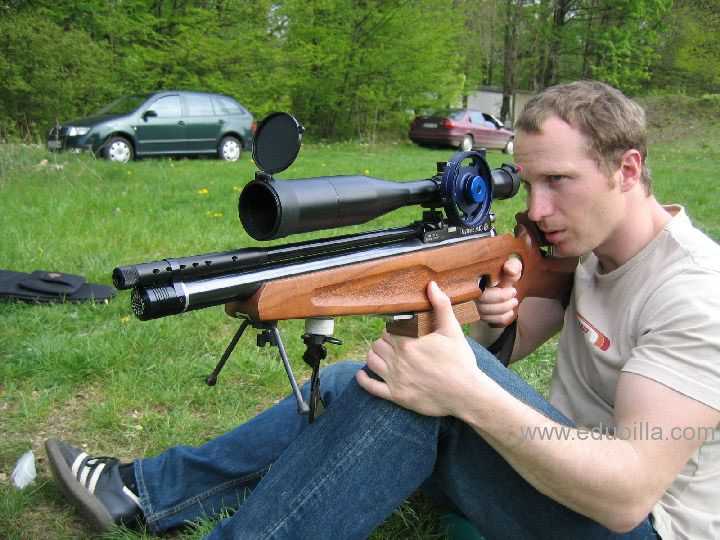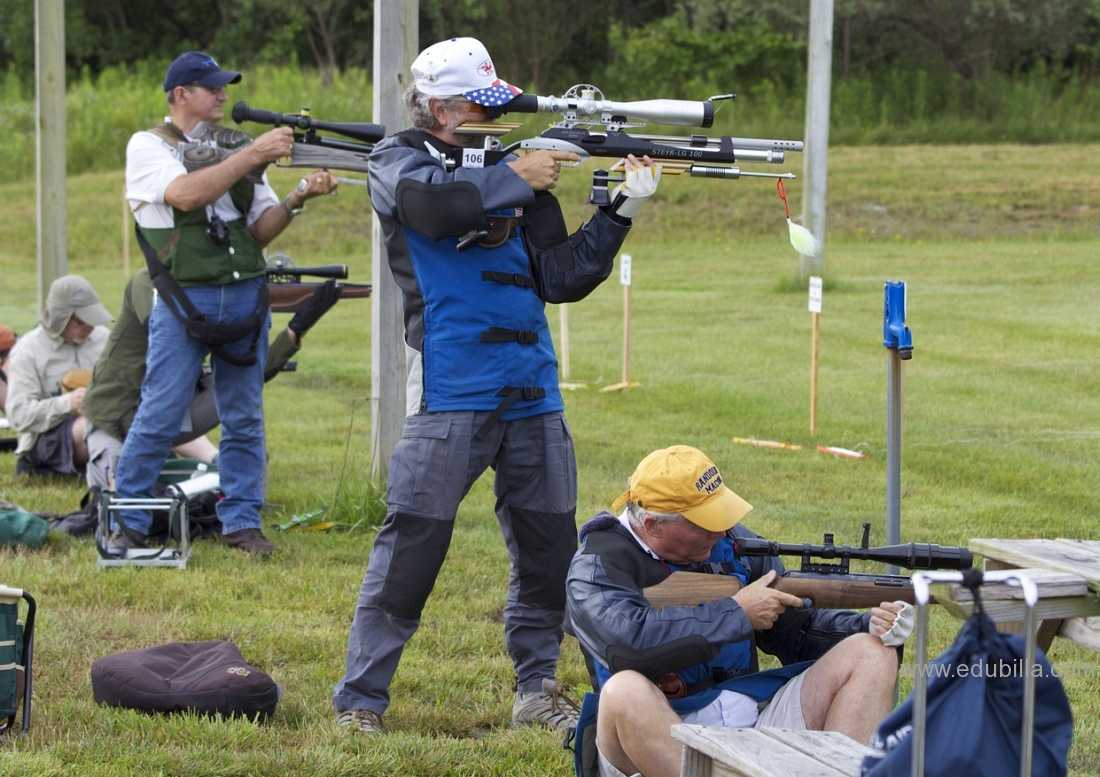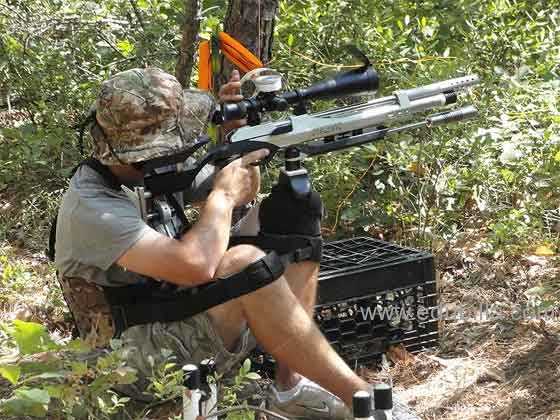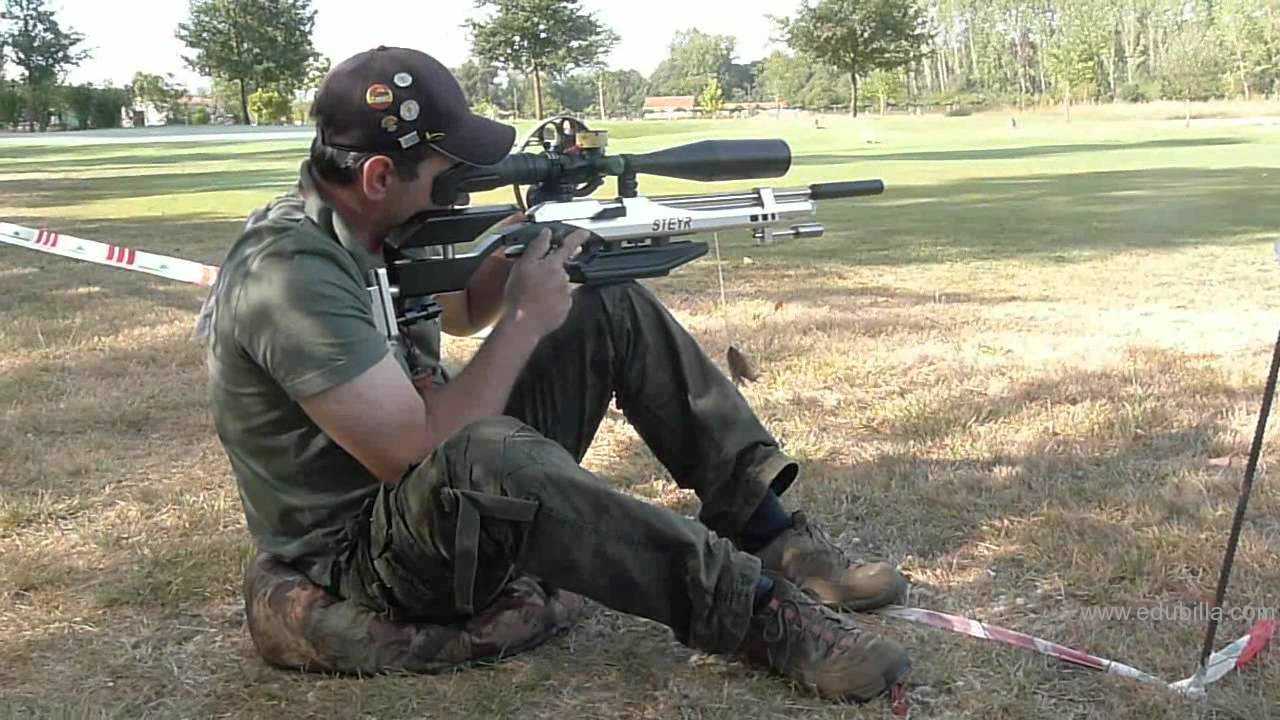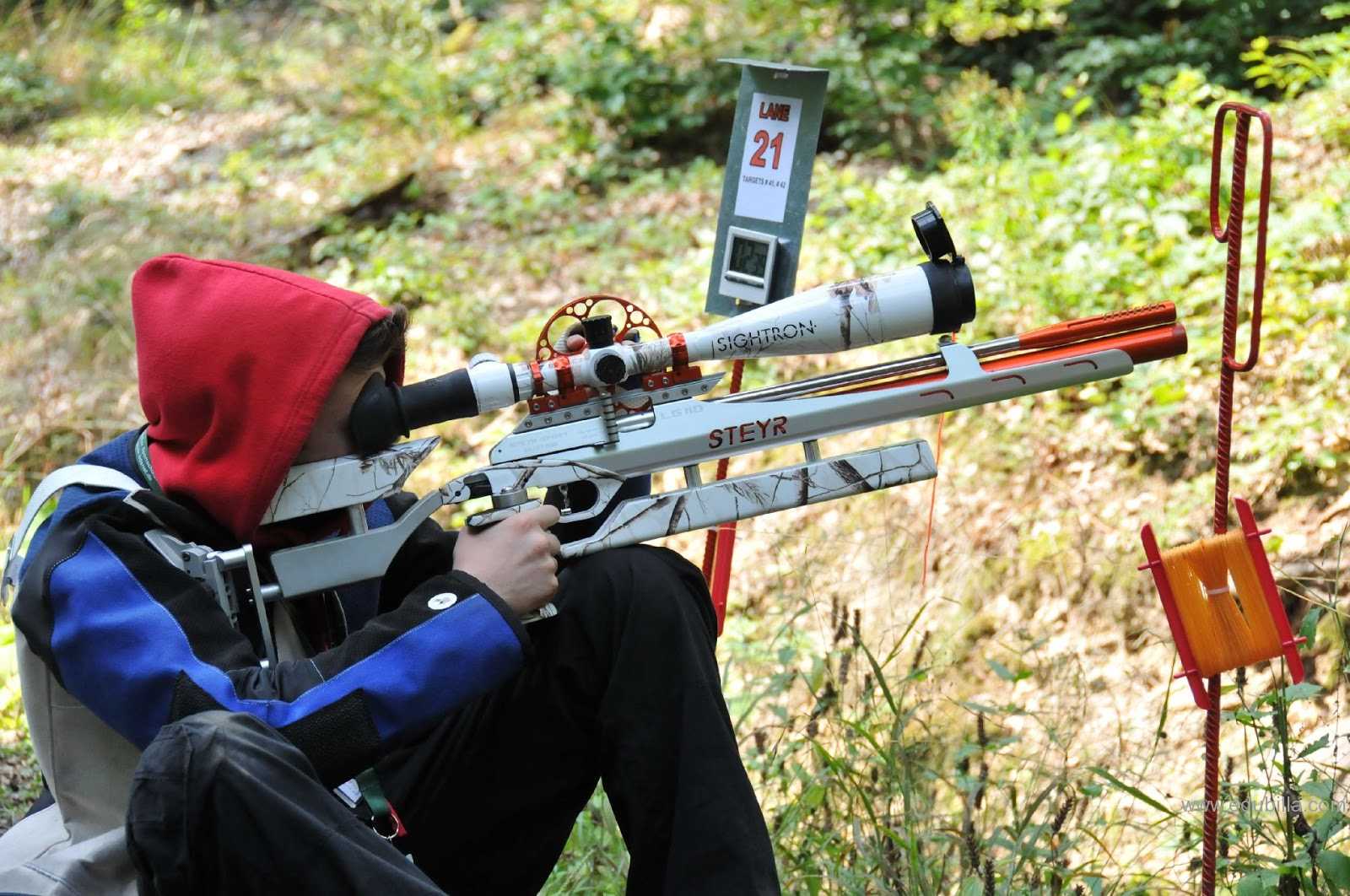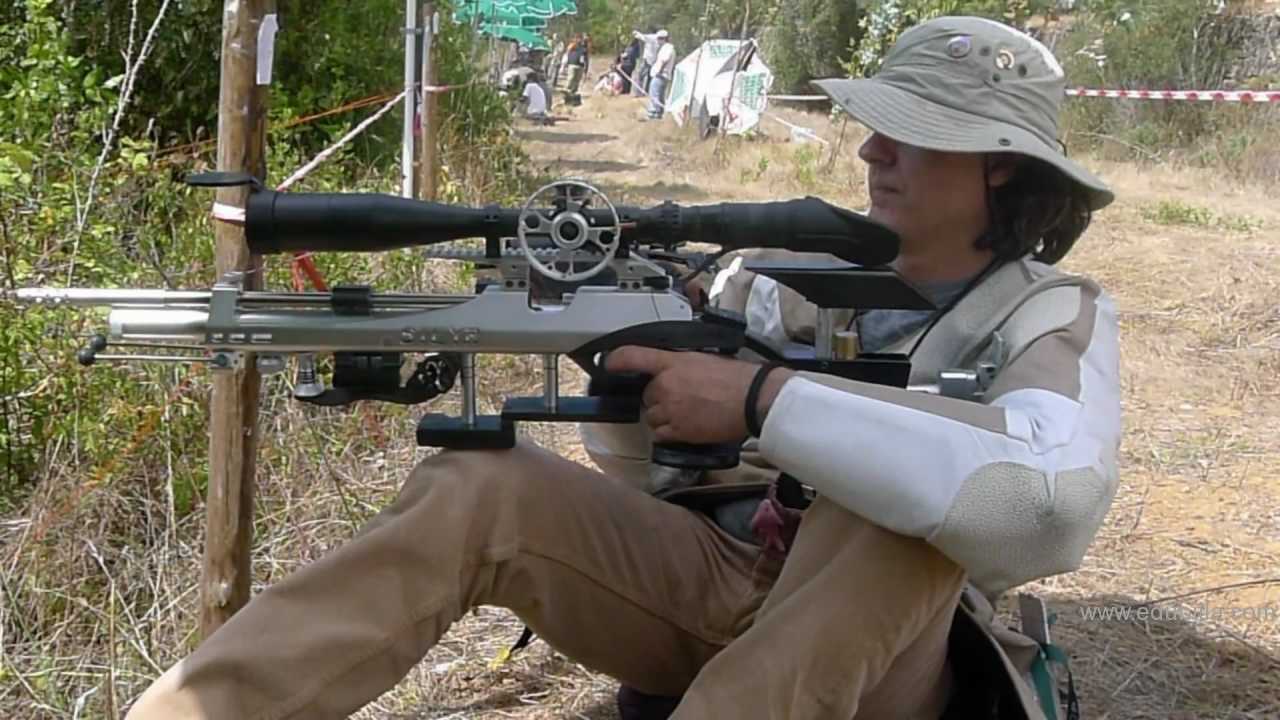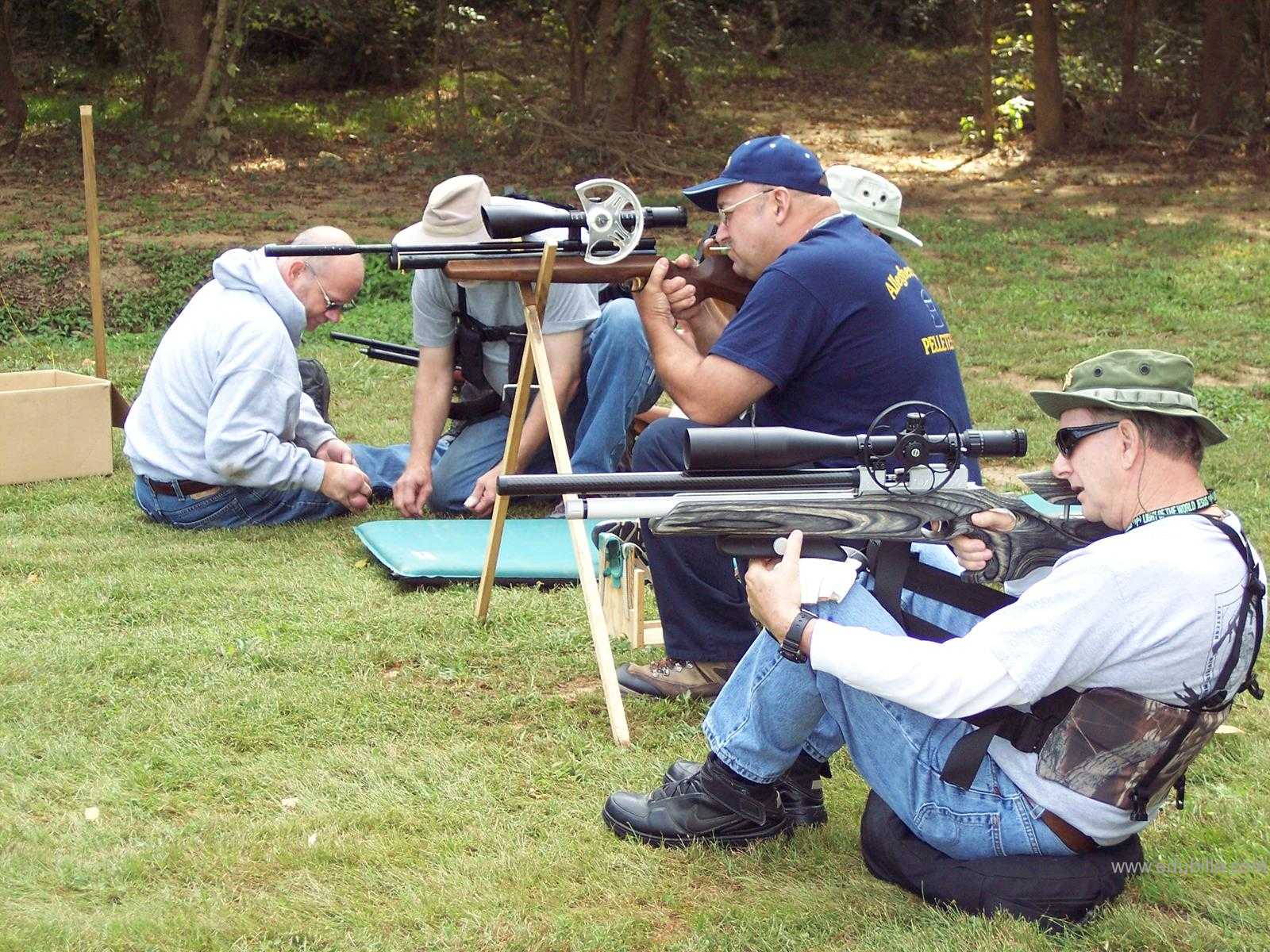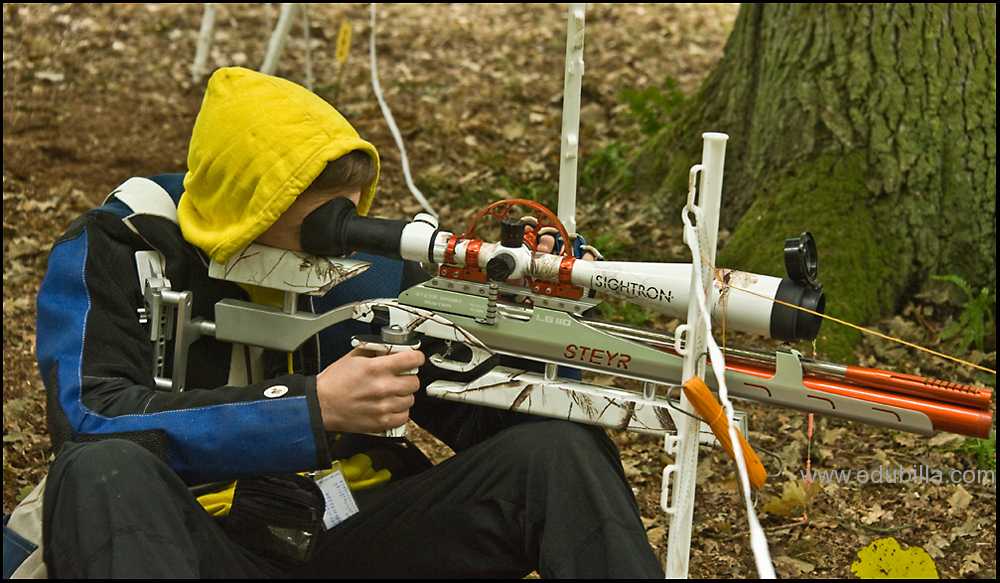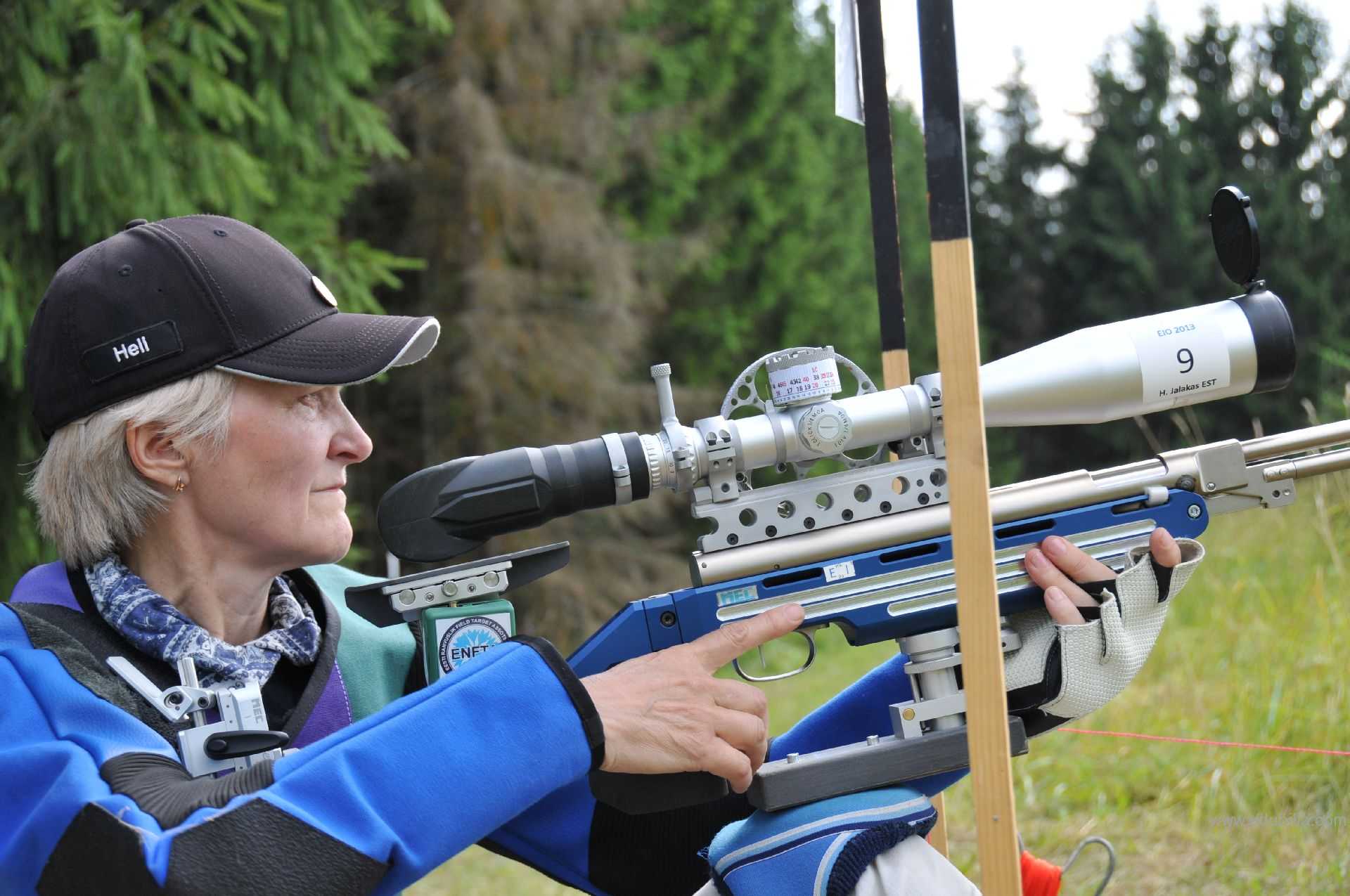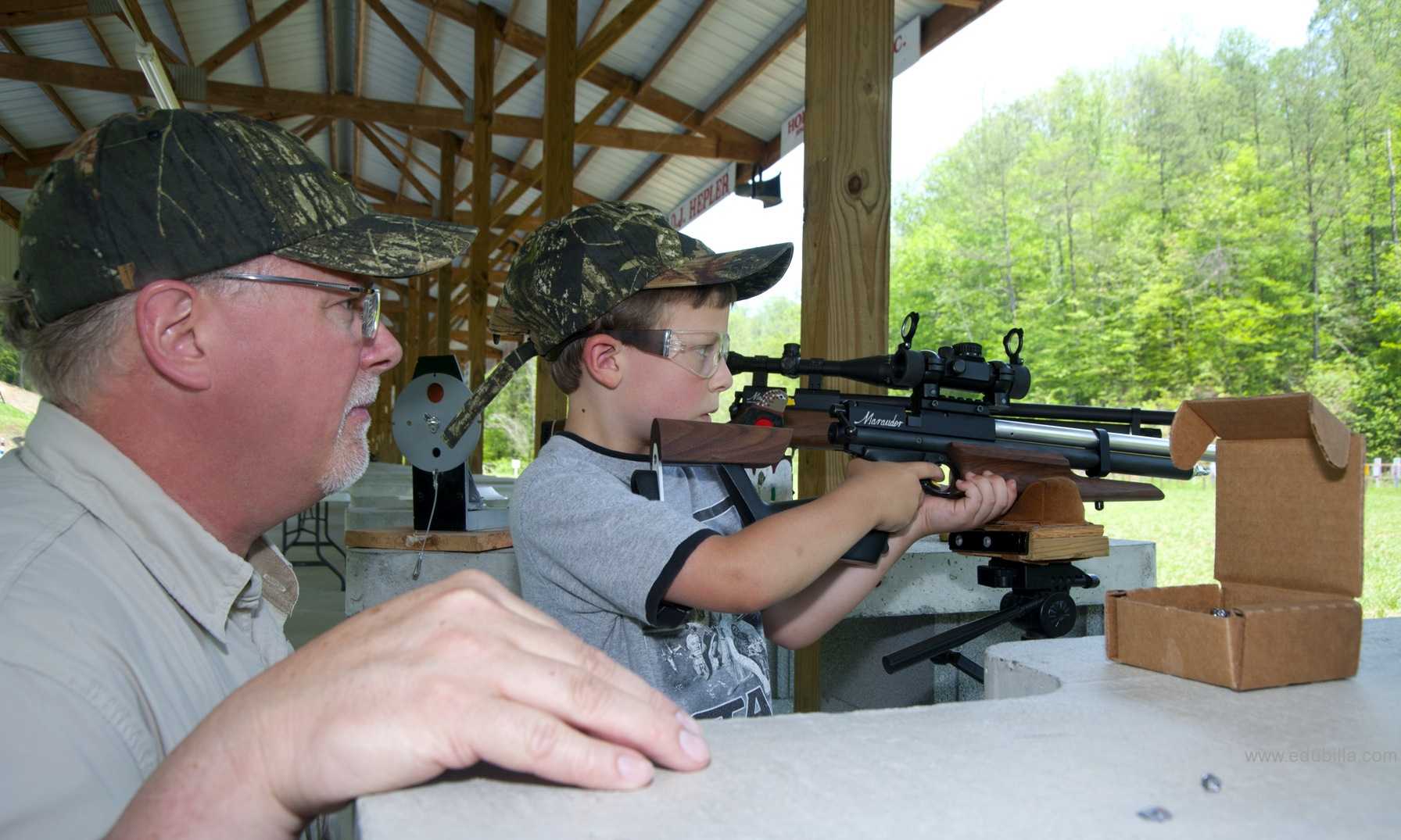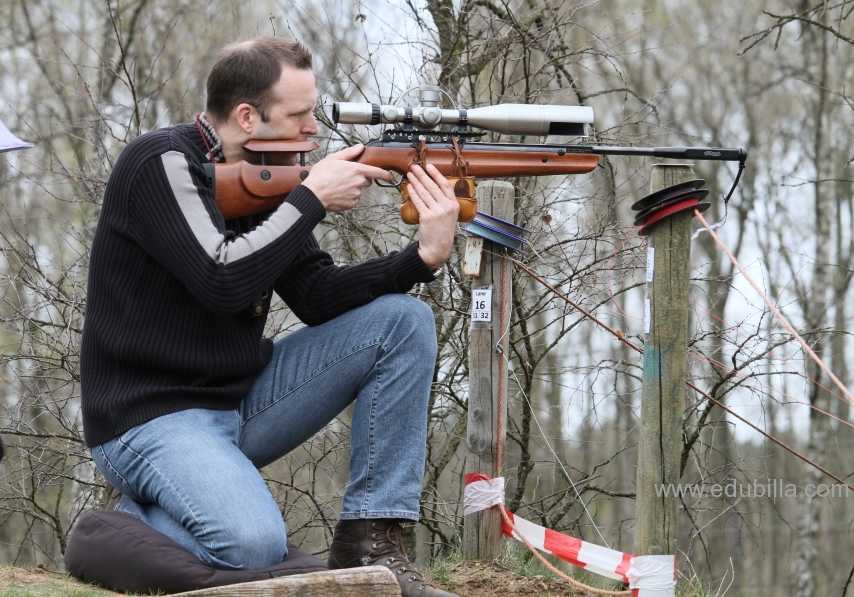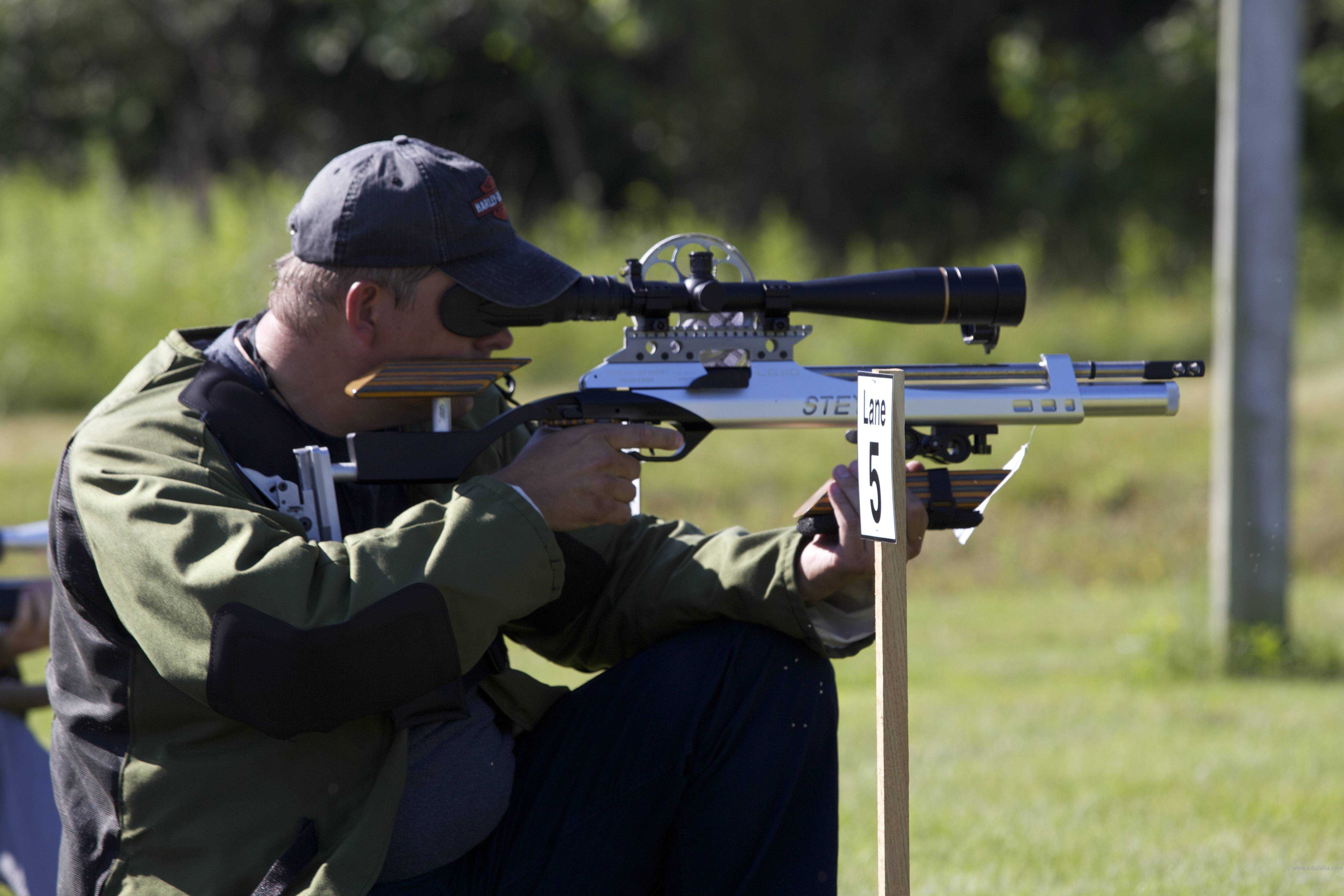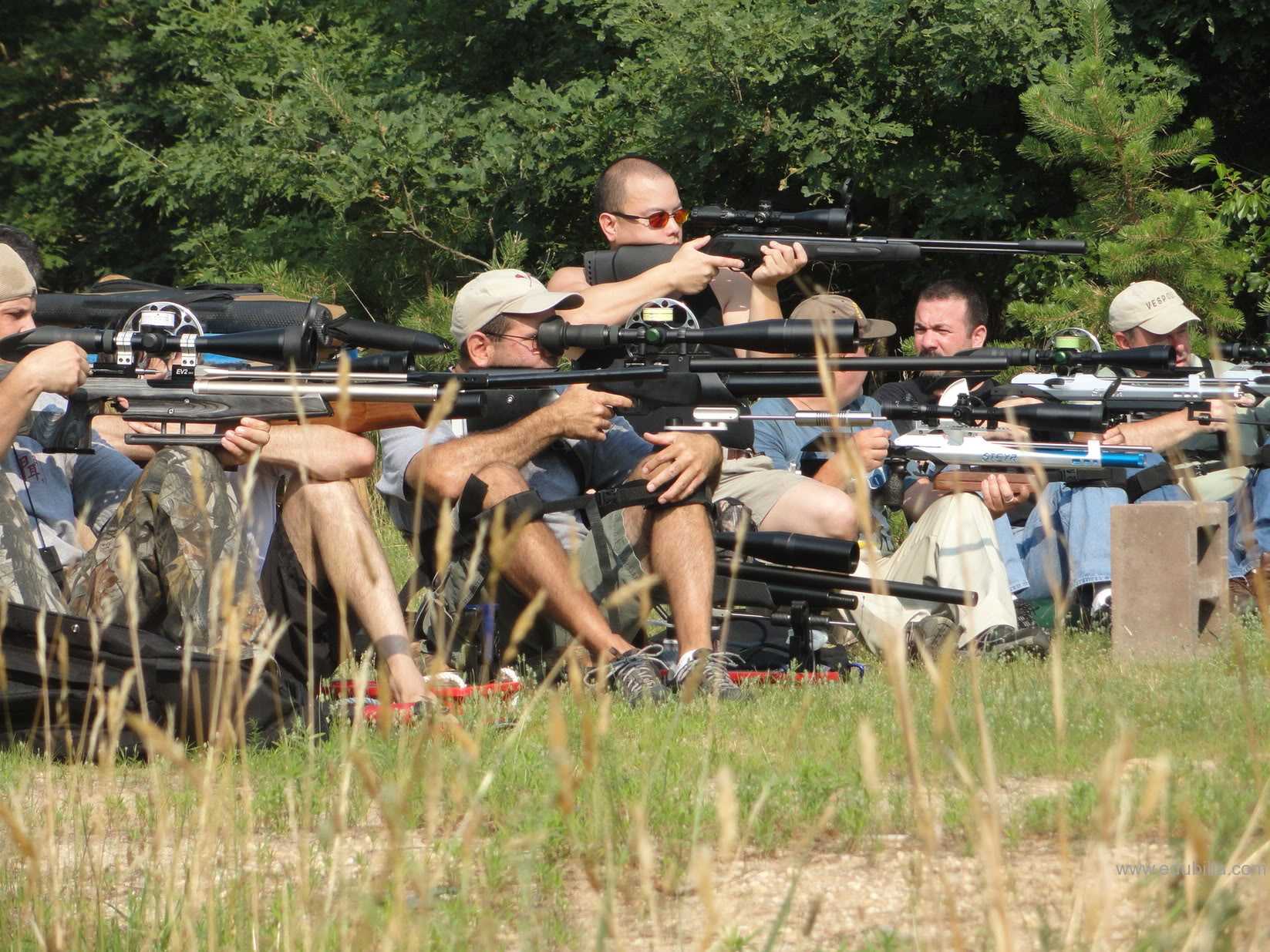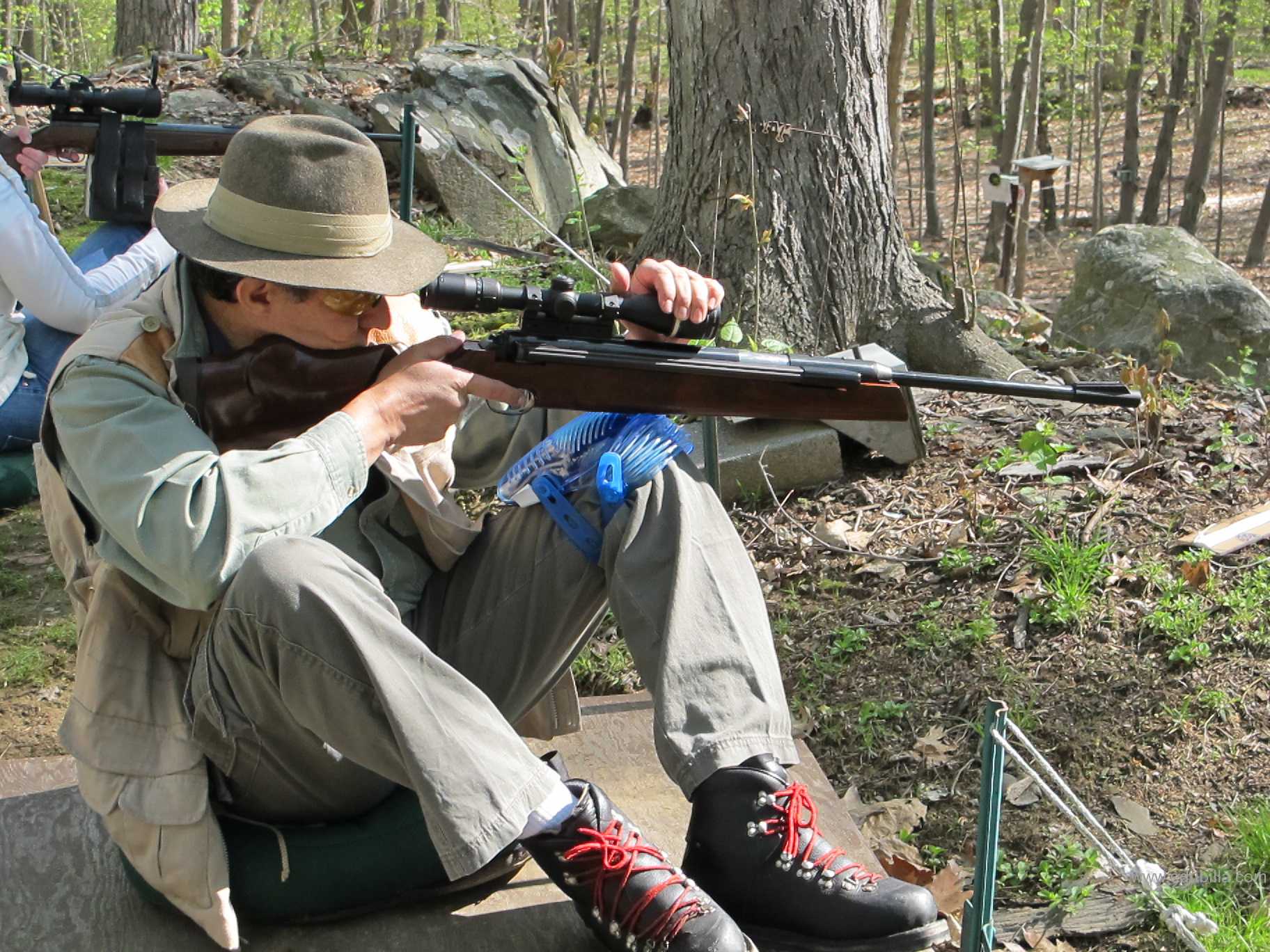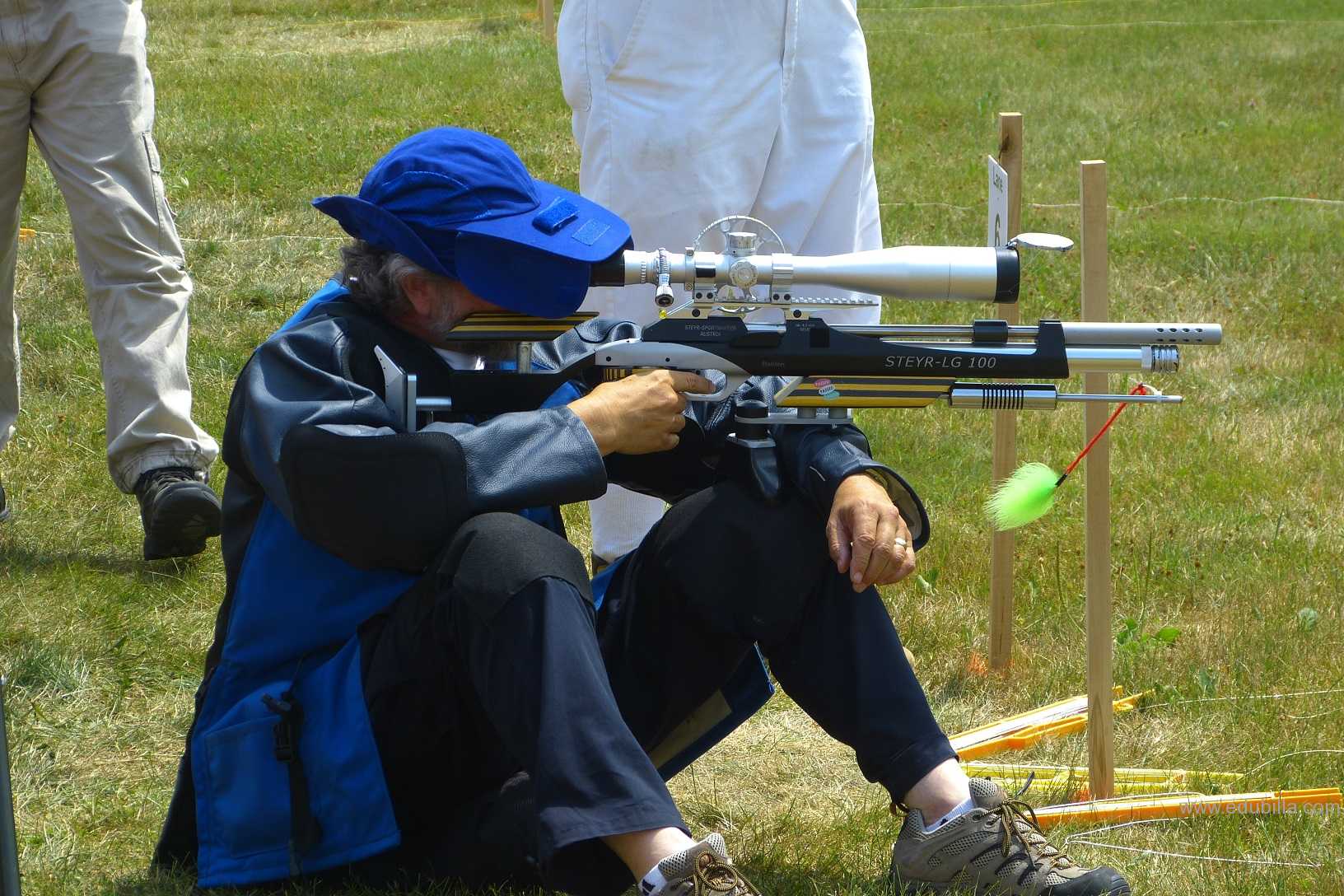
Overview Of Field target
Field target is an outdoor air gun discipline originated by the National Air Rifle and Pistol Association in the United Kingdom in 1980.
Popularity:
The new sport quickly gained popularity and spread across the UK. By the mid 1980's the sport had grown massively in popularity, with the familiar knock down style targets being introduced. The introduction of the Weihrauch HW77 was a pivotal point in the sport, as this rifle quickly established itself as the rifle of choice, either out of the box or in a custom form from specialist tuners such as Venom Arms and Airmasters.
Field target Positions:
Field Target matches are conducted outdoors, with multiple targets engaged using a variety of positions: prone, kneeling, sitting, and standing. On a walk-through, multi-stage course, targets are placed at unknown distances from 7.3 meters to 50 meters in the UK or from 10 yards to 55 yards in the USA*. Targets are typically silhouette-style animal shapes, although there is a trend towards simple geometric shapes.
Game Rules
SAFETY
- As is the case in all shooting sports, safety on the range is of the utmost importance.
- No rifle may at any time be pointed in the direction of people or animals.
- Except whilst shooting, no rifle may be loaded. Rifles must face down range whilst being loaded.
- When a ceasefire is signalled (one whistle/horn) and a rifle is loaded, the shot must be fired into the ground in front of the shooter.
- When carrying a rifle it should be pointed up or down, unless in a closed case or bag. If carried in an open rifle carrier, the cocking lever/bolt shall at all times be in the open position.
- No non-participants are allowed on the shooting line.
- No children or pets are allowed on ranges during a competition, unless accompanied by and under control of a responsible adult.
- No alcohol or drugs may be consumed before or during a day’s competition until the last shot had been fired. This excludes prescribed medication.
COURSE CONTENT:
- Shall consist of 150 targets over 2 or 3 days.
- Lanes should contain a minimum 2 and maximum 3 targets.
- Target type shall be fall-when-hit (face plate with hole and paddle behind), and have an attached reset cord for resetting the target from the firing line.
- Targets, face plate & paddle must be 100% visible from all shooting positions; standing, kneeling, sitting & prone. Any obstruction should be related to the chief marshal and removed prior to the first competitor shooting that lane, otherwise the obstruction must remain for the duration of the competition.
- Targets shall be placed square to the firing line +/- 5 degrees
- No lane firing area should result in a dangerous stance having to be adopted by the shooter i.e. excessively steep, slippery, etc.
SHOOTING:
- Targets are addressed in numerical sequence i.e. 23,24,25,26, etc
- Competitors shall be timed 2 targets=3mins, 3 targets=4 minutes, etc. Time commences when you sit down and address the target or when you address the target for standing or kneeling shots. Range finding, loading of rifle, checking of the wind are all part of the timing process.
- Every competitor is charged with leaving each lane firing area in a safe and tidy condition for the following competitors.
Equipments Need For Field target
Airguns:
- Air rifles (PCP or Springer) with an output not exceeding 12 ft/lbs (16.3 Joule), and which are in safe working condition may be used.
- No power adjustments may be made to an air rifle during a competition.
- In host countries where higher power air rifles are allowed, the latter may participate in a separate class.
- Fully adjustable rifle stocks, excluding thigh rests, are permitted to accommodate various shooting styles and positions.
Ammunition:
- Any design of pellet that is completely made of lead, lead alloy, zinc or zinc alloy, or a similar material may be used.
Sights:
- Any form of sighting system may be used with the exception of laser sights.
- No built-in or separate laser range finding device may be used.
Rifle accessories allowed:
- A single rifle sling - no additional straps are allowed.
- Butt hook
- Spirit level
- Sunshade on scope
- Scope enhancer (rubber)
- Thermometer
- Wind indicator (non-electronic)
- Inclinometer
Wind reading options:
- To assist shooters reading the wind the available options are :
- Wind indicator (string or similar) attached to the rifle.
- Target string.
- No additional equipment, electrontic or other, may be used to assist the shooter in evaluating the wind or other weather conditions.
Clothing:
- Any type of clothing, glove or footwear is allowed provided it is not a hazard to the shooter or others.
- Clothing may be padded to reduce the pressure of the rifle stock resting on the arm or knee.
- Separate pads may be worn over non-padded clothing.
- Gloves may not contain any rigid material extending beyond the wrist.
Seating:
- The maximum height for any form of seating is 150 mm (6”) when flattened between 2 boards
- The seat may only be used as an aid in sitting or kneeling shots.
History Of Field target
- Field Target (FT) first started on the 7th September 1980, the first event being held on land behind a pub called the Red Lion in Magham Down in Sussex.
- Over 100 people attended this inaugural event, armed with air rifles varying from a Webley Vulcan in .22 calibre to an FWB 300 match rifle. It was originally started as an informal sport for anyone with an air rifle. The original targets were not the knockdown type we know now, but simple metal silhouettes of the common quarry species, to which orange stickers were affixed as hit zones.
- The new sport quickly gained popularity and spread across the UK. By the mid 1980's the sport had grown massively in popularity, with the familiar knock down style targets being introduced. The introduction of the Weihrauch HW77 was a pivotal point in the sport, as this rifle quickly established itself as the rifle of choice, either out of the box or in a custom form from specialist tuners such as Venom Arms and Airmasters.
- At some point in the mid 1980's, FT shooting was adopted by the USA, initially hosted stateside by only a handful of small clubs across the country. As more shooters joined the legions of devoted weekend "hunters", there appeared a need for a national organization to oversee the growth of the sport. Thus, the American Airgun Field Target Association (AAFTA) was born in 1987 to manage the sport. The US rules differ slightly from the UK version.
- By 1987 the sport had reached comparatively massive proportions in the UK, with attendances in excess of 300 at the national shoots. 1987/88 saw the first serious use of pre-charged pneumatic (PCP) rifles and high magnification scopes in FT, which would ultimately have a profound effect on the sport.
- The first international FT events started taking place somewhere in the mid 1980's, with UK shooters being invited to attend events in the US. Shooters such as Richard North, Tom Walton, Terry Doe and others travelled to California for various events around 1987/8.
- The first formal world championships came about at the end of the 80's into the early 1990's, with the venue alternating between the UK and the US - these two being the only major players at this time.
- Over the 1990's other countries started to appear on the scene. Norway was one of the first with Germany following at a later date. By the end of 2011 the WFTF (World Field Target Federation) already consisted of 30 member countries.
Origin Of Field target
Field Target shooting got its start in the early 1980's when a handful of British airgunners attempted to create a new sport to simulate hunting with an airgun. Metal targets in the shape of typical airgun quarry were placed at typical airgun hunting distances. A paper target was placed on the kill area of the animal. Competitors shot at the target and then a judge went down to score the hits and replace the paper kill zone.
First U.S. Championships:
Field target shooting came to the U.S. in the mid 1980's, appearing almost simultaneously in California and Florida. Florida hosted the first U.S. Championships in 1987, in West Palm Beach. This match was so well accepted that a small hard-core group of airgunners formed the AAFTA (American Airgun Field Target Association), and immedi
Field target shooting in England:
The sport was born on a typical autumn day in Sussex, England. Despite the frigid, blustery conditions, over 100 shooters from all over the southern regions of the United Kingdom banded together to try their hand at the new game. The rules at the first match were deceptively simple; estimate the distance to the target, correct the scope settings to compensate for the trajectory of the lead airgun pellet, and shoot at a paper target stuck to the animal.
American Airgun Field Target Association:
Field target shooting was imported into the US from England, and was originally hosted stateside by only a handful of small clubs across the country. As more shooter joined the legions of devoted weekend "hunters", there appeared an need for a national organization to oversee the growth of the sport. Thus, the American Airgun Field Target Association (AAFTA) was born in 1987 to manage the sport. AAFTA has the responsibility of overseeing any rule changes, as well as hosting the annual National Field Target Championships. At this time only clubs are allowed to join AAFTA, but contacting them can result in a subscription to their newsletter, which includes a list of airguns clubs around the country that regularly hold matches.
Governing Bodies
World Field Target Federation (WFTF):
The World Field Target Federation (WFTF) specifies and regulates World Championship, International or other major field target events.The WFTF now has 32 member countries spread across all 6 continents.
Administration:
The WFTF is managed by a president elected by nomination and majority vote from representatives of each National Governing Body (NGB) who serves for a period of three years.
Management of the world championship is the responsibility of the chairman of the hosting countries NGB and will act as Vice-President of the federation until the end of the hosted championship
Championships:
Categories
There are two classes of shooting, Precharged and Spring each with the following placings:
- World Champion and 2nd to 10th
- 1st Lady
- 1st Veteran
- 1st Junior
- 1st to 3rd Teams.
Awards Related To Field target
The WFTF Championship will decide and award the following:
Precharged Category
World Champion and 2nd to 10th, 1st Lady, 1st Veteran, 1st Junior and 1st to 3rd Teams.
Spring/Piston Category
World Champion and 2nd to 10th, 1st Lady, 1st Veteran, 1st Junior and 1st to 3rd Teams.
Sample Documents Of Field target
-Muhammad Ali




